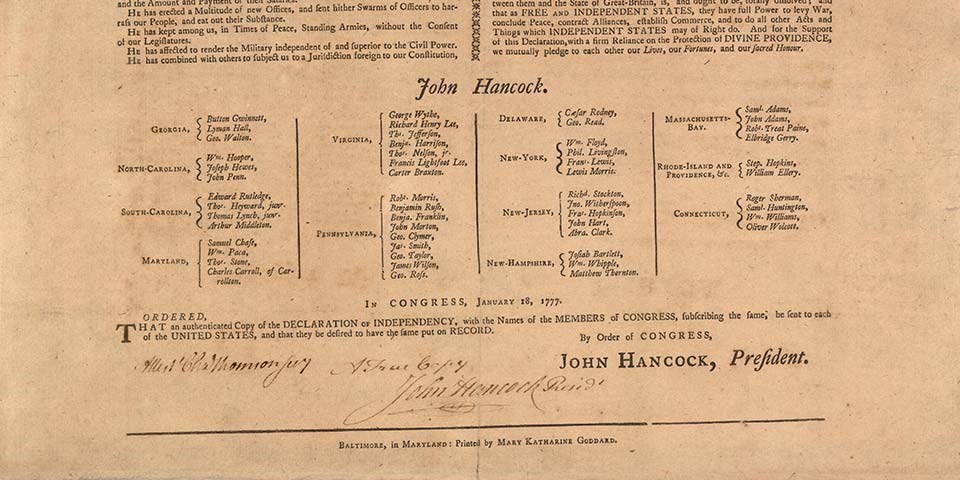
We know there were no women in the Continental Congress. And yet, when the Declaration of Independence was printed with the signatures (actually the second printing), at the very bottom is the line “Baltimore, in Maryland: Printed by Mary Katharine Goddard”. How did that happen?
Things were not going well for the rebellion in the winter of 1776. The Continental Congress was forced to evacuate Philadelphia for Baltimore. Then General George Washington’s victories at Trenton and Princeton, New Jersey gave the patriots so much hope that not only was a second printing of the Declaration ordered, but this version would include all the signatures.
Enter Mary Katharine Goddard. She was a patriot, Baltimore’s postmaster (thus probably making her the United States government’s first female employee), and a printer.
Goddard was born on June 16, 1738, into a Connecticut family of printers and postmasters. Her schooling came from her mother, who taught her reading and math, and New London’s public school, where girls could receive instruction after the boys’ schooling was done.
Her world was turned upside down in 1755 when her father Giles, postmaster of New London, became too ill to work. Giles died in 1762 and the family relocated to Providence. Mary’s younger brother William took over, and the family moved from Providence to Philadelphia to Baltimore to found newspapers. In February 1774, Mary was given control of the Maryland Journal, which she used to support the rebellion, which is how she was selected for the Declaration’s second printing. Realizing the significance of the moment, she made sure her full name appeared at the bottom of the document.
For the complete story, see “Mary Katharine Goddard, the Woman who Signed the Declaration of Independence” by Erick Trickey (https://getpocket.com/explore/item/mary-katharine-goddard-the-woman-who-signed-the-declaration-of-independence).
